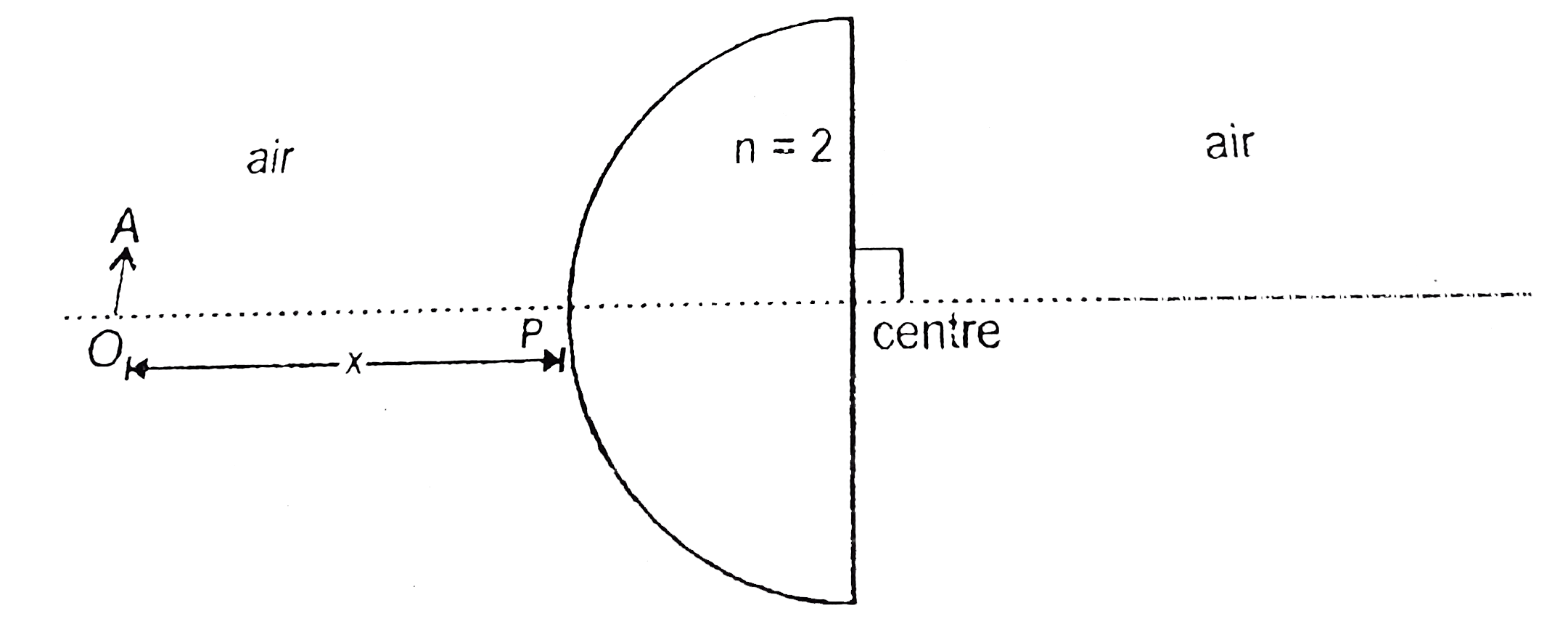
Consider a transparent homogenous hemisphere of refractive index n=2 in front of which a small object is placed in air as shown in figure.
if value of x=3R then the final image of the small object OA will be real & inverted.
If value of x=2R then the final image of the small object OA will be inverted and magnified.
consider a ray starting from O which strikes the spherical surface at grazing incidence (i≅90∘) taking x=R the angle (from normal) at which the ray will emerge from the plane surface is 30∘
consider a ray starting from O which strikes the spherical surface at grazing incidence (i≅90∘). Takin x=R the angle (from normal) at which the ray will emerge from the plane surface is 90∘.
The correct Answer is:A, D
For first surface
2V−1−3R=2−1R⇒2V=1R−13R
2V=23R⇒V=3R
for second surface u=2R
1V=22R⇒V=R Real & inverted.
(B) for first surface
2V−1−2R=2−1R⇒2V=1R−12R
⇒V=4R⇒m1=−1
for second surface u=3R
1V=23R⇒V=3R2 real & inverted and same size.
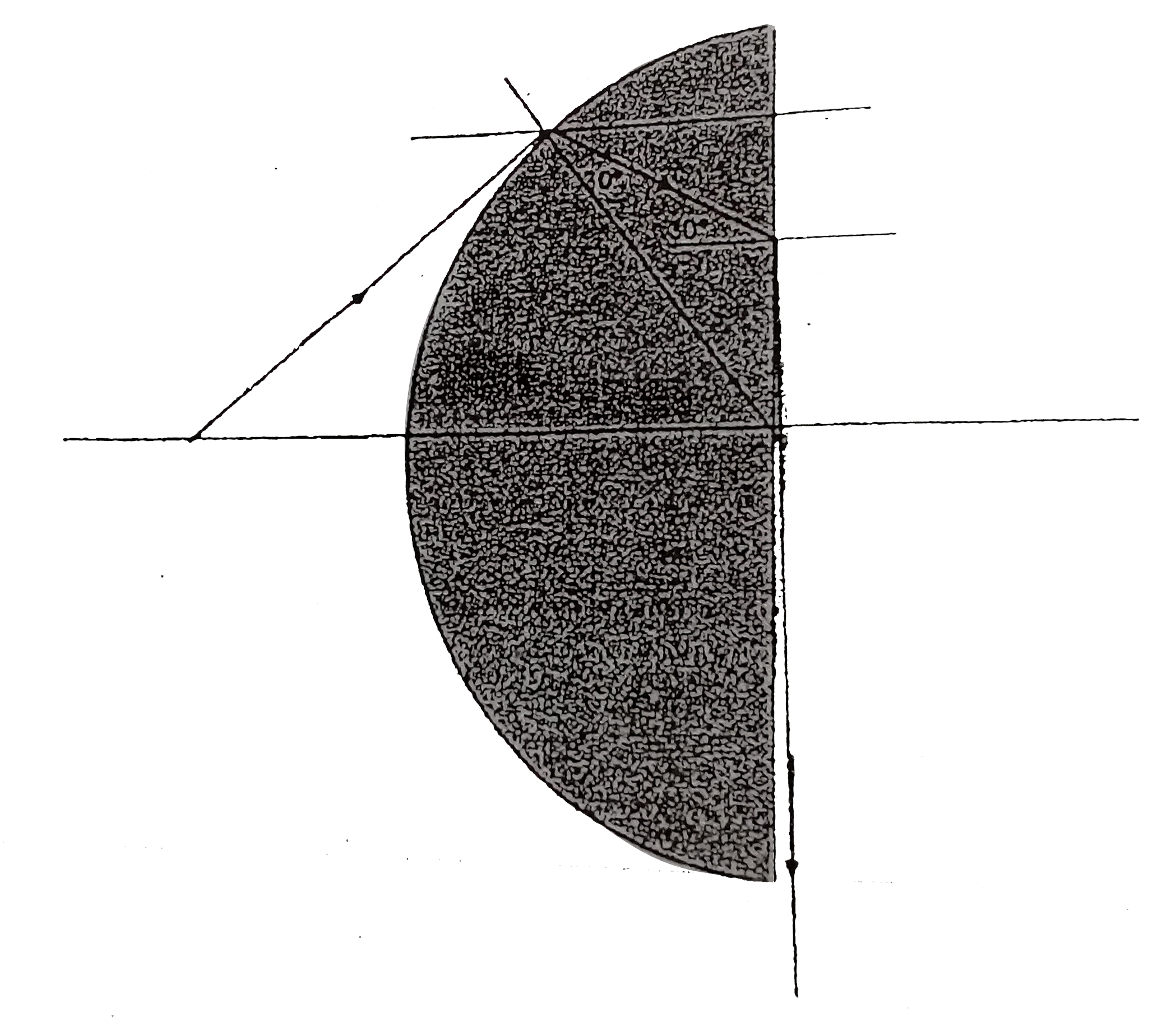
Topper's Solved these Questions
- TEST PAPERSBOOK - RESONANCECHAPTER - TEST PAPERSEXERCISE - PT-01
30 Videos
- TEST PAPERSBOOK - RESONANCECHAPTER - TEST PAPERSEXERCISE - Pt-02
30 Videos
- TEST PAPERSBOOK - RESONANCECHAPTER - TEST PAPERSEXERCISE - PART - II PHYSICS
107 Videos
- SIMPLE HARMONIC MOTION BOOK - RESONANCECHAPTER - SIMPLE HARMONIC MOTION EXERCISE - Advanced Level Problems
13 Videos
- TEST SERIESBOOK - RESONANCECHAPTER - TEST SERIESEXERCISE - PHYSICS
127 Videos
Similar Questions
Consider a transparent hemispher (n=2) in front of which a small object is placed in air (n=1) as shown in figure.

Q. For which value of x, of the following , will the final image of the object O be virtual?
View SolutionConsider a transparent hemispher (n=2) in front of which a small object is placed in air (n=1) as shown in figure.
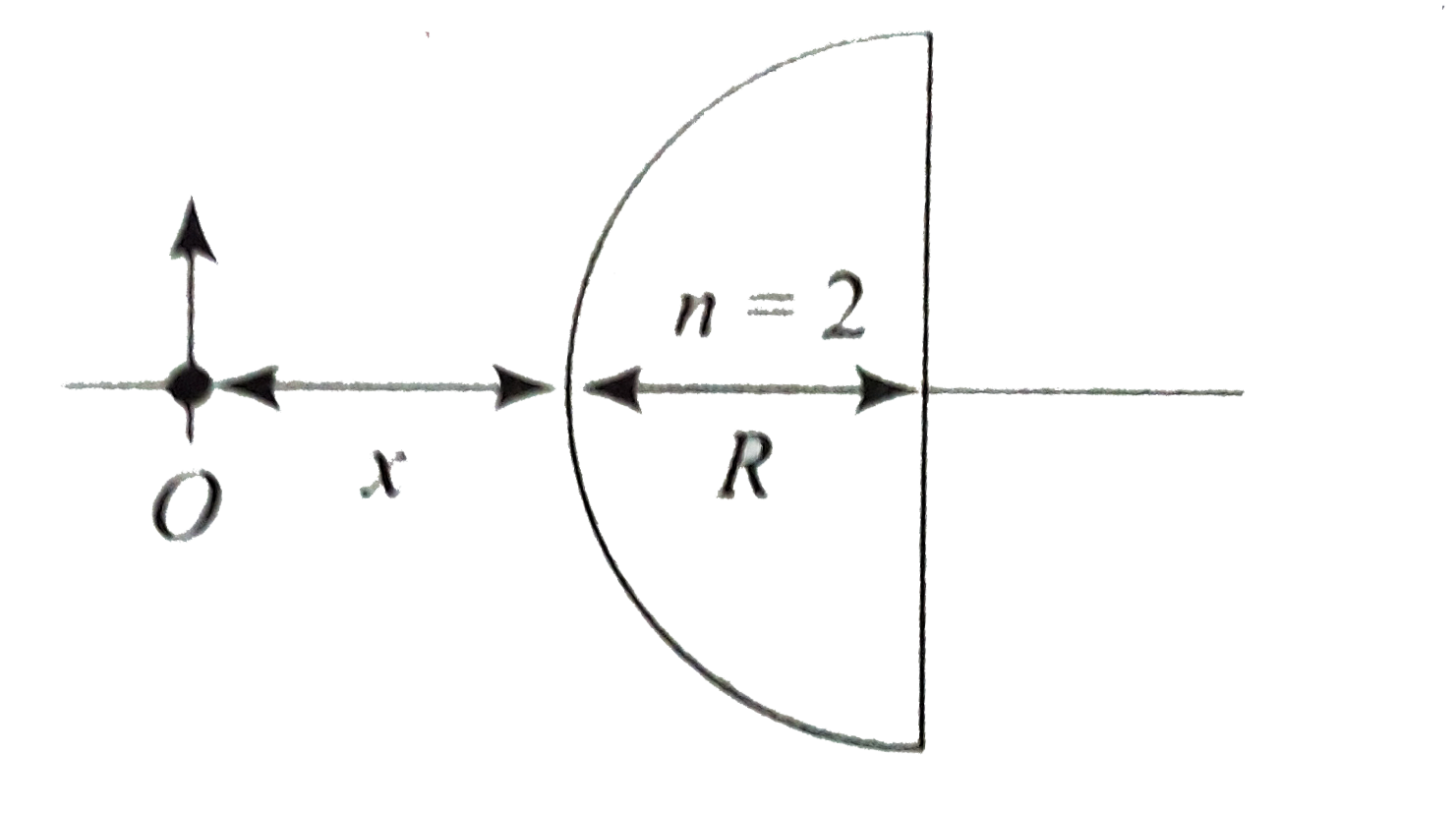
Q. What is the nature of final image of the object when x=2R?
View Solution
Knowledge Check
Consider a transparent hemispher (n=2) in front of which a small object is placed in air (n=1) as shown in figure.

Q. For which value of x, of the following , will the final image of the object O be virtual?A2RB3RCR/2D1.5RConsider a transparent hemisphere (n=2) in front of which a small object is placed in air (n=1) as shown in figure.

Q. What is the nature of final image of the object when x=2R?AErect and magnifiedBInverted and magnified.CErect and same size.DInverted and same size.Consider a transparent hemisphere (n=2) in front of which a small object is placed in air (n=1) as shown in figure.
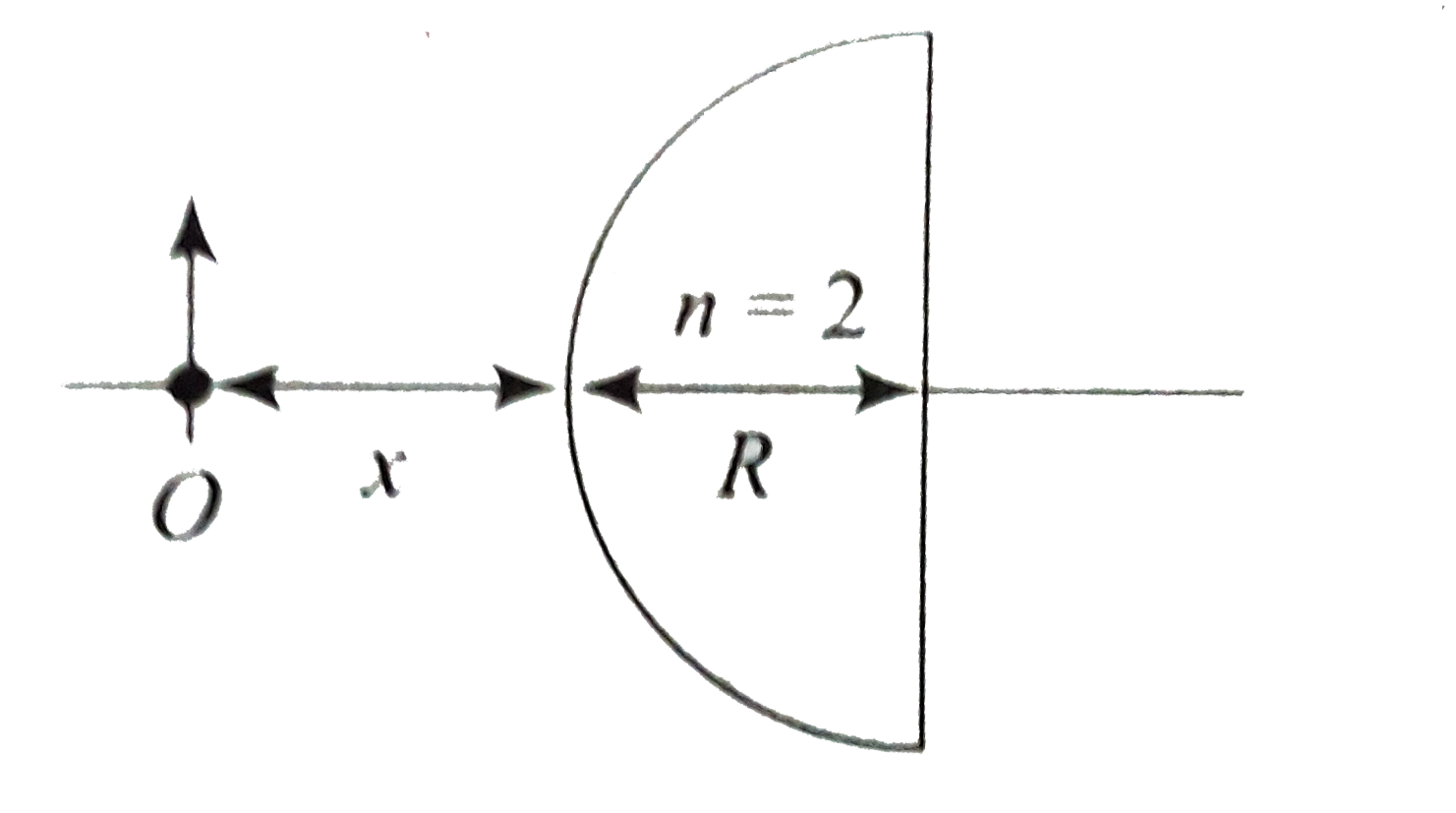
Q. Consider a ray starting from O which strikes the spherical surface at grazing incident (i=90∘). Takin x=R, what will be the angle (from normal) at which the ray may emerge from the plane surface.A90∘B0∘C30∘D60∘
Consider a transparent hemispher (n=2) in front of which a small object is placed in air (n=1) as shown in figure.

Q. Consider a ray starting from O which strikes the spherical surface at grazing incident (i=90∘). Takin x=R, what will be the angle (from normal) at which the ray may emerge from the plane surface.
View SolutionA person is looking at the flat surface of a transparent hemisphere of refractive index μ=√2 . Half of the flat surface is coloured black and half of curved surface is coloured in six equally spaced strips as shown in Figure. Then
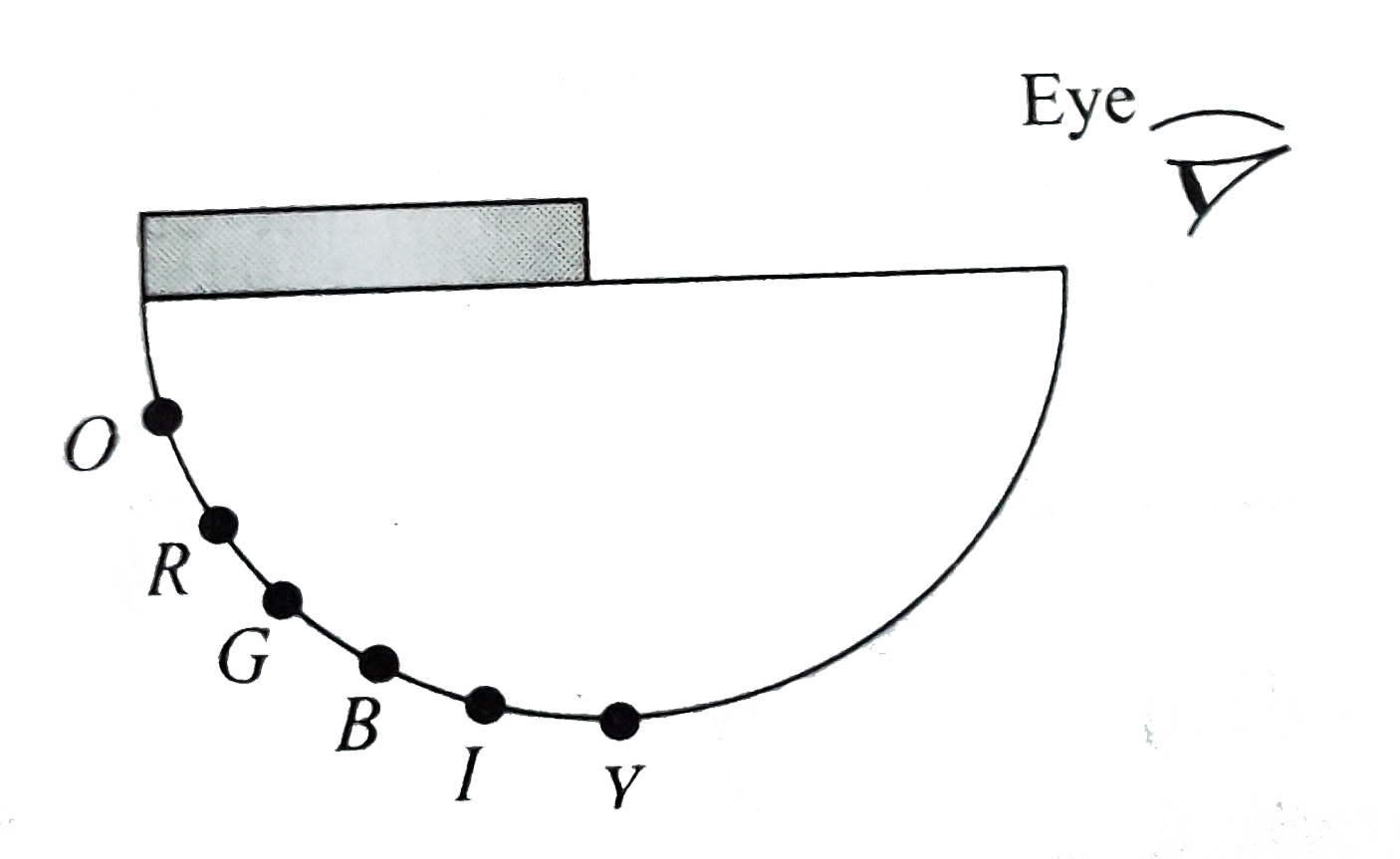
View SolutionConsider a transparent hemisphere (n=2) in front of which a small object is placed in air (n=1) as shown.
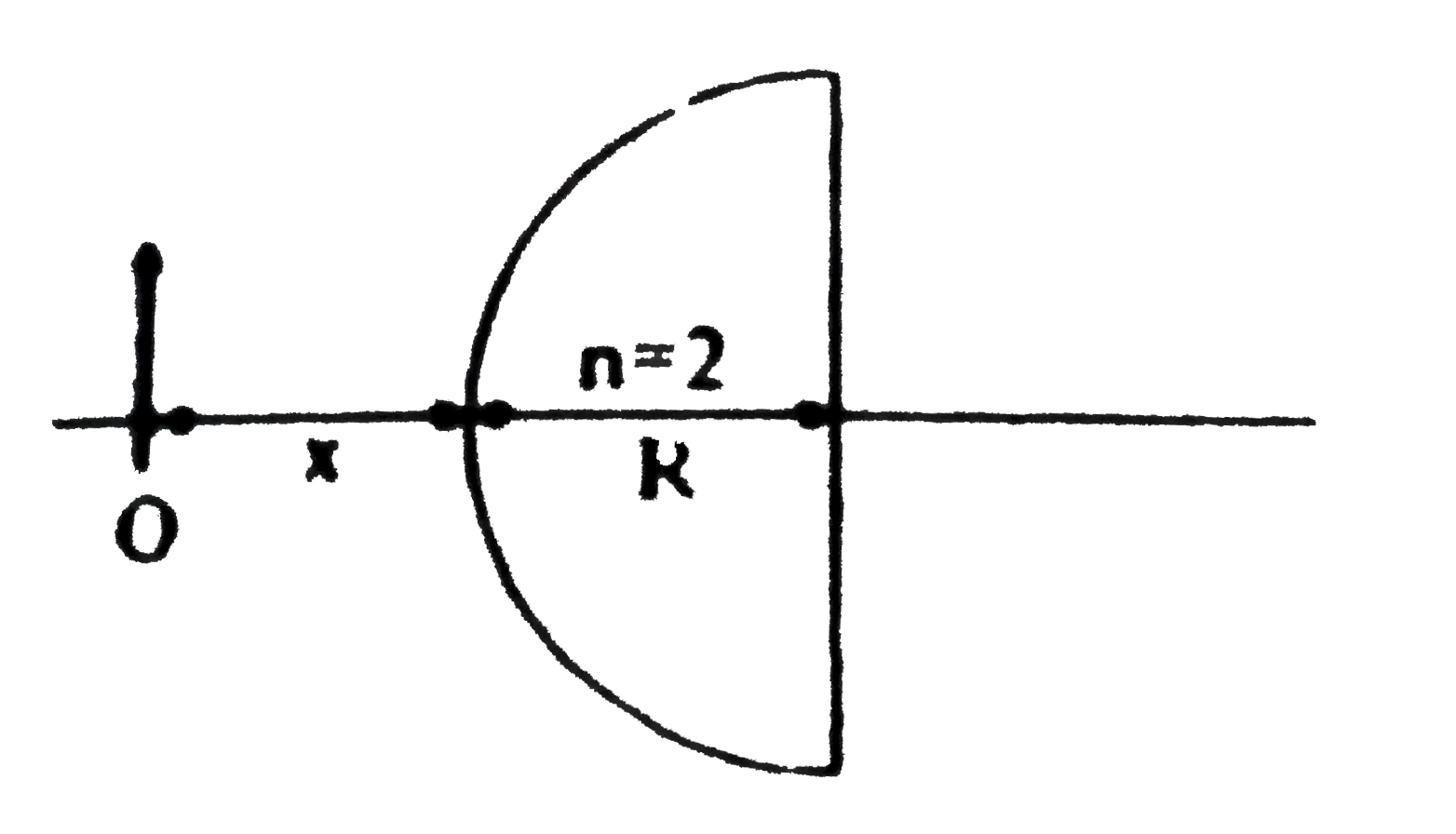
What is the nature of final image of object x=2R
View SolutionConsider a transparent hemisphere (n=2) in front of which a small object is placed in air (n=1) as shown.
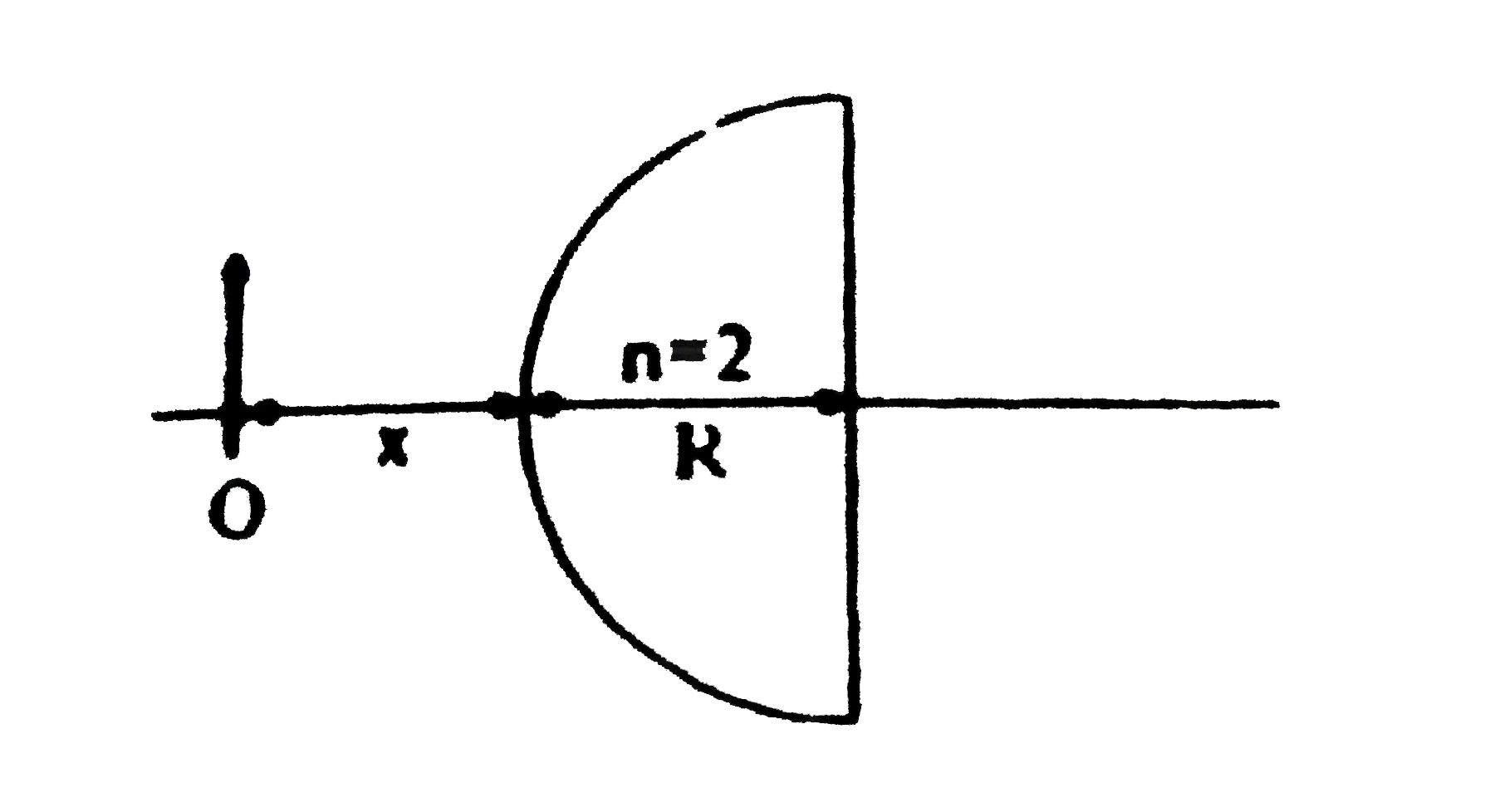
Consider a ray starting from O which strikes the spherical surface at grazing incidence (i=90∘) Taking x=R what will be the angle (from the normal) at which the ray emerges from the plane surface.
View SolutionConsider a transparent hemisphere (n=2) in front of which a small object is placed in air (n=1) as shown.
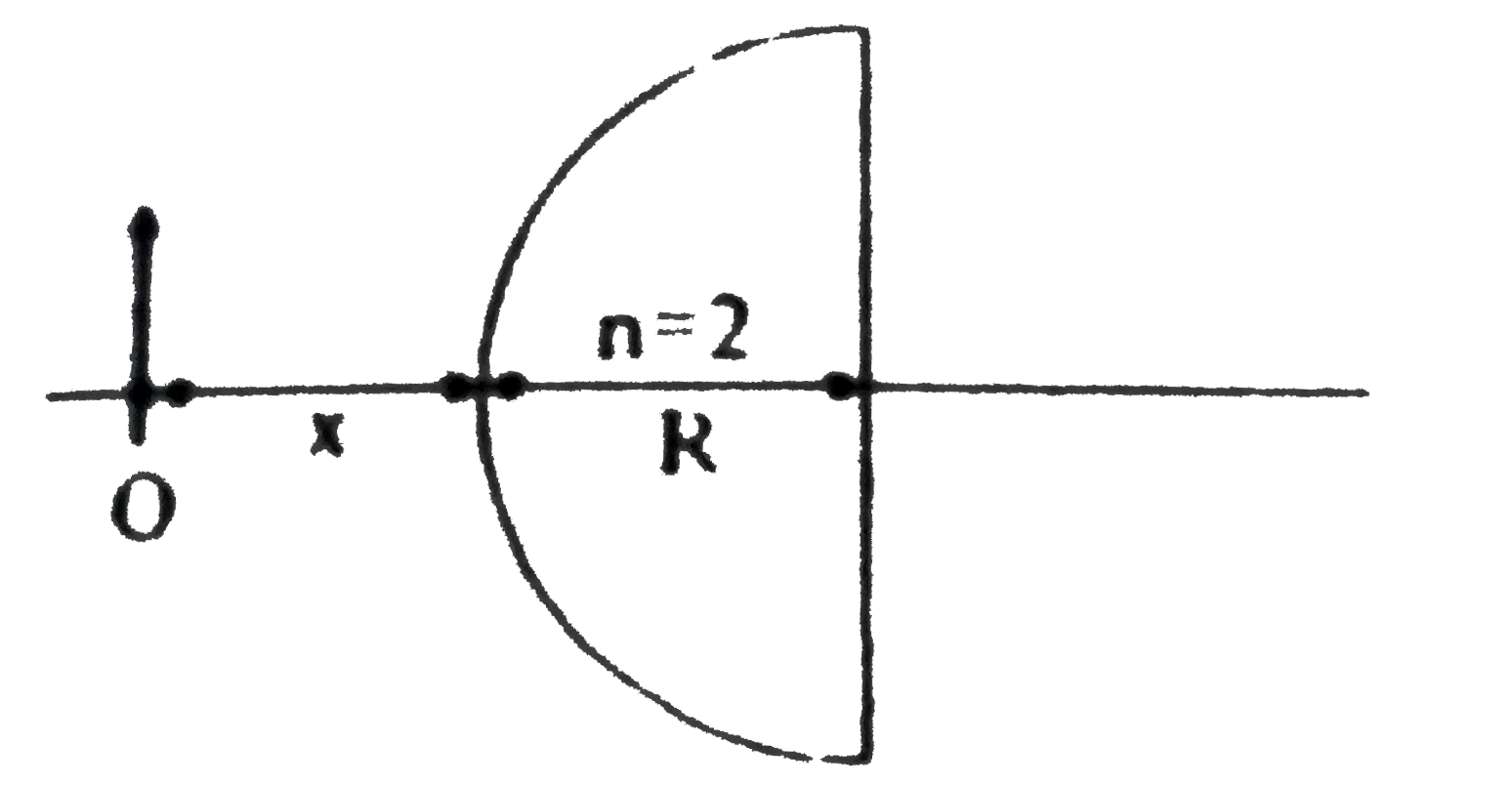
For which value of x of the following will final image of object at O be virtual
View Solution
